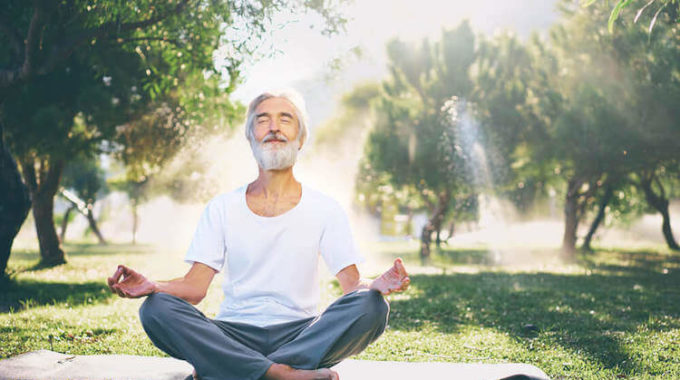
How Meditation Can Reduce Risk of Certain Diseases
Meditation is nothing new; it dates back to 5000 B.C. and was initially associated with Eastern religions and philosophies, such as Buddhism and Hinduism. There are also inferences and references to it found in Judaism, Christianity, and Islam. Over the past century, the medical community has documented many therapeutic benefits to the practice, including its ability to reduce the risk of certain diseases.
It Does a Body Good
Proponents of meditation and relaxation techniques have lauded the health benefits of the practice for decades. Now, in a scientific statement published Sept. 28, 2017, in the Journal of the American Heart Association, the American Heart Association recommends it as a potential method of reducing the risk of heart disease.
The benefits aren’t limited to heart health, either. Studies have shown meditative procedures to be beneficial in relieving symptoms of irritable bowel syndrome and ulcerative colitis. It may boost immunity in those recovering from cancer and inflammatory conditions.
Studies at the University of Western Australia revealed increased fertility in men and women who regularly practised meditation. Harvard Medical School conducted studies that showed it reduced stress hormones, resulting in lower blood pressure. A study done at Ohio State showed an increase in resistance to viruses and tumours among elderly patients who practised meditation exercises for a month.
According to the Mayo Clinic, meditation may also offer help in managing symptoms in a variety of other conditions.
- Anxiety
- Asthma
- Chronic pain
- Depression
- Sleep difficulties
- Tension headaches
By far, however, the potential benefits were evident in those at risk for heart disease.
Heart Disease and Meditation
Cardiovascular disease is the leading cause of death in the United States and worldwide. This statistic makes heart disease a frequent subject of medical studies. In recent decades, an increasing number of studies have focused on the benefits of reducing the stress that potentially contributes to high blood pressure and cardiovascular disease.
Researchers stress that studies indicate there is a possible benefit of mediation in reducing cardiovascular risk, but the data are not definitive. This means that people should not forego traditional means of maintaining heart health. Diet and exercise remain paramount to a healthy cardiovascular system.
Emerging evidence surrounding meditation, however, combined with the low risk of side effects, makes it an attractive adjunct to conventional treatments. A review of studies found heart-related benefits of meditation included decreased stress levels, a reduction in depression and anxiety, improved sleep quality and a greater sense of well-being.
All Meditation Is Not the Same
The word “meditation” is a catch-all phrase for numerous ways of achieving a relaxed physical and mental state. Frequently, various techniques overlap, all with the same goal of achieving inner peace.
There are numerous varieties of meditation, most with a set of standard components:
- Practicing in a serene location where distractions are not likely to occur
- Assuming a comfortable posture; can be sitting, lying down or even walking.
- Focusing attention on using a chosen word or phrase, a favourite object or a physiological function such as breathing
- An open mind that brushes off distractions
Meditation is a practice with a long history. The purpose, regardless of the type practised, is to increase physical relaxation and calmness. Meditation is a way to balance the mind emotionally and psychologically and to assist in coping with illness. It can help in enhancing overall well-being and health.
A few of the more commonly used ways to meditate include:
- Mantra meditation. This is the type of meditation most think of when considering meditation as a whole. In this form, a chosen calming word thought or phrase is silently repeated to prevent distracting thoughts.
- Guided meditation. In this method, the meditator forms a mental image of favourite relaxing places or situations. The practitioner utilises sensory input, such as sight, sound, texture and smells. This type of meditation is frequently used in group situations with a designated guide or teacher.
- Mindfulness meditation. The goal of this type of meditation is to increase awareness of living in the present moment. Those practising this meditative technique attempt to improve conscious awareness of thoughts and emotions.
- Transcendental meditation. This is a natural, pure method of meditating. The practitioner silently repeats a personal mantra – a word, sound or phrase – in a consistent way. Transcendental meditation’s goal is to bring the body and mind into a state of ultimate relaxation without expending effort or focusing concentration.
- Yoga. This is a technique of controlled breathing exercises and specific postures designed to increase body flexibility and improve calmness. Practitioners move through the poses, using balance and concentration to focus on the moment.
- Tai chi. This form of Chinese martial arts improves relaxation and concentration while providing gentle exercise. Tai chi teaches a series of self-paced postures and movements performed in a relaxed, graceful manner. Deep breathing exercises are interwoven with the moves.
- Qigong. A part of traditional Chinese medicine, this practice is a combination of relaxation, meditation, physical movements and breathing exercises designed to restore and maintain balance in the body and mind.
Getting Started
Some techniques can be self-taught, but most are best learned from a guide or teacher. Local mental health centres, community centres and some religious organisations offer free classes in varying forms. Local community colleges and universities may offer courses in certain techniques. Fitness centres are an excellent place to find specific classes. There are a plethora of YouTube videos discussing and demonstrating meditation techniques, and there are also books and websites dedicated to step-by-step instruction in the art of mindfulness.
Home care agencies have a vested interest in keeping their clients healthy. If you or a loved one currently receive care from a home care agency, ask them for recommendations on additional health and fitness services.






